Interview: Author Katherine Gleason on her book, 'Alexander McQueen: Evolution'
|
|||||||||||||||||
|
The scholar John Rodden calls the literary interview a “fully-fledged genre.” I used to be skeptical, but after assigning my students at The College of Saint Rose to speak with an author, I’m more inclined to think the literary interview qualifies as a distinct form of performance. I put out a call on Facebook and Twitter: Would you speak to a college student about your book? I asked. Sure, they said. Review copies were sent, students selected authors, read and researched their work, and asked questions. - Daniel Nester, Contributing Word Editor |
AUTHOR KATHERINE GLEASON ON HER BOOK, ‘ALEXANDER MCQUEEN: EVOLUTION’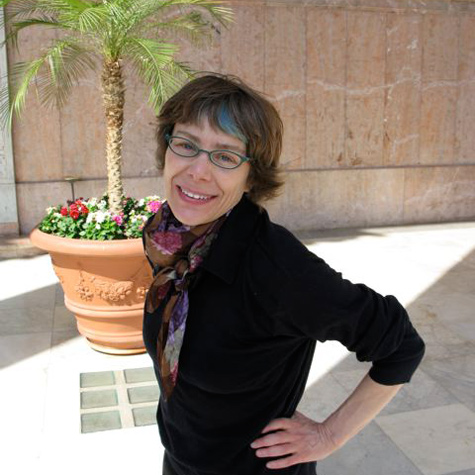 |
||||
INTERVIEWED BY
|
On a rainy, fall evening in Manhattan’s Alphabet City, in between cups of coffee and trips to Brooklyn, I had the pleasure of meeting freelance writer and style enthusiast, Katherine Gleason. Katherine is the author of the new book, Alexander McQueen: Evolution – an anthology of the late Alexander McQueen’s runway shows from his beginnings in the early 90s, to his death in 2010. Amidst visits from her cats, tangents on growing up on the East Coast, and a bit of McQueen show-and-tell, we were able to chat about the life of a writer, theatricality, and, of course, the legacy of McQueen. BARKER: Were you a fan of McQueen before you started writing Evolution? GLEASON: Yes! He’s really so amazing and it’s so sad that he’s gone. I lost a lot of friends to AIDS in the early 90s, so he felt like somebody that I used to know, and then he’s dead too, so there’s sort of that whole “the dead genius” thing. Even though McQueen didn’t die from AIDS the impact is still powerful. The afterward in the book is really beautiful because it’s about the day that McQueen died. BARKER: I think it was the first day of Fashion Week. GLEASON: I never actually did get to go to one of his shows. When his career first started in that sort of early 90s period, I had a lot of stuff going on. Now in retrospect, I say to myself, “Rats, I can’t believe I never got to go to one!” I really wanted to look at, as best one can, looking back on something that is kind of ephemeral really, and they’re like little moments of theater. There are videos of a lot of it, but it’s not the same as being there. I was trying to capture some of that theater and that drama—and the romance and the craziness of it all, which is just so amazing to me. BARKER: How long did it take to write the book, including the time it took to conduct the interviews? GLEASON: We did it really fast. The chapter I wrote first was the one on Widows of Culloden. I wrote it in December and we were supposed to be done March 1—I was supposed to be done March 1, but I wasn’t. We went into April maybe, but not a lot. I did a lot of interviews. What I found fairly quickly though—well, two things. A lot of people think they remember stuff from 20 years ago and they don’t. They’re wrong. The interviews were great and people were really sweet and a lot of people were super, super helpful but the kind of level of detail that I wanted, people didn’t remember. Thank God for LexisNexis. Otherwise, I would’ve like just had to move into the public library. It was a lot of work. BARKER: How did you become interested in fashion? GLEASON: I would say that I’m more interested in style and design probably more than I am in fashion. And I’ve always been more of a spectator at a museum than a consumer. I am wearing Levi’s, yes. [Laughs.] BARKER: Because he went or because he had other access? GLEASON: Because he went and they were sent to him by the McQueen PR people. He had also gone because he carried some of the McQueen stuff. Very early—he was the first shop in Manhattan, I think, to carry McQueen. BARKER: What about McQueen’s work and legacy impacts you the most? GLEASON: I think going into it I was really interested just that he’s an artist. It’s not just clothes—not that anybody is just clothes—his approach to his art was so amazing and he had such total vision. I thought that was really beautiful and really amazing. Seeing the show at the Met, and the ideas and themes and the stuff that he was doing, was incredibly profound. I think what I became more impressed with was how the fashion industry and the publishing industry are kind of similar in a way I hadn’t thought about before. And to me, I thought that was really cool. As a writer you’re an artist, but you’re also trying to make a product that people will buy. It’s really true, and it’s the same thing with fashion, and that, to me, was a really interesting position to be in. He was very brave and very dedicated. BARKER: You see a lot of designers who just sell out to Anna Wintour and to everybody at InStyle and Elle. He always kept his originality and theatricality. He was making clothes for the art. In a sense, he wasn’t making clothes for the money. GLEASON: You know, what’s interesting is reading the reviews of some of the shows. There’ll be a really outrageous show and people will be mad at him because he was so outrageous, and then there’ll be a tamer show and they’ll be mad at him for being tame and accuse him of selling out! I think that you really felt that originality and theatricality after seeing the Met exhibit. When I interviewed Valerie Steele, she said she felt like that when you went into that show, you knew this was his passion—he’s really giving himself over and exposing his heart and his mind in a way that maybe other people don’t so much in their work. It wasn’t the product of a focus group. BARKER: How did you get started working in publishing and in writing? GLEASON: I was a Russian major in college. I then did a two-year MA in Russian and Eastern European studies. Basically, I got out of school and realized I was completely unemployable! I really didn’t have any idea what I was doing. I did a bunch of things, which led to working at a magazine called Lingua Franca. I wasn’t there for very long. I also started, sometime in the late 80s, at a sort of a community newspaper called WomaNews. It was a feminist newspaper, and I started working with them and it was really fun! We did everything ourselves, we laid stuff out—back in the days when you did layout. BARKER: Was it a freelance job? GLEASON: It wasn’t even like freelance. There was no money; nobody had money. I did a lot of arts-related coverage and wrote about film and books, and did a lot of book reviews. Then I got the job at Lingua Franca, which was more administrative. I was managing editor and head of research and, I suppose, was supervising the freelance copy editor. I was doing everything that no one else wanted to do pretty much. Love those jobs. BARKER: What other writing forms have you worked in over the years? Essays? Short stories? GLEASON: A lot of short stories. I was doing flash fiction for a while, just under 1000 words or under 500. Under 500 words was my specialty for a little while. I did have some success with those, but then I started feeling like, “Oh, there’s a trick I know how to do, now I need to learn a different trick.” So I have drafts of longer stuff everywhere that are just like big messes that I need to fix. I’ll get to some of it eventually, I hope. BARKER: Do you find that you put a lot of your own life into your work? GLEASON: I think a lot of your own life gets into anything that you write. It just does—even if it’s something indirect. Your filter just comes out in how and what you write. I don’t write very autobiographically—some things are—but it tends to become indirect. I love writing prompts. For a while, I studied with this woman named Roberta Allen, who’s a visual artist and a writer. A bunch of us would meet at her house and she’d pull out words and set a timer. BARKER: You’ve free-lanced many children’s books over the years; how did you get into writing for that demographic? GLEASON: I had been in a writing group for children’s books for a long time. I went to dinner with a friend of mine, and she was like, “Why don’t you try to get a job in children’s books?” And I was like, “Uh, duh!” BARKER: How much of a paradigm shift is it to write for adults as opposed to children? I can imagine it’s much more difficult. GLEASON: It is and it isn’t. Sometimes it simply becomes a question of how you’re going to explain something in such a short amount of space. BARKER: In the end it kind of becomes flash fiction. GLEASON: Ooh, a little bit, yeah! I like all the weird gothic shit about bats and stuff like that and kids do too, so I get to write about bats! Some of the kids’ stuff I’ve done are little stories about scientific research. I got to talk to different scientists who were working in animal social behavior and talked about their research. My theory in trying to explain it in a way that’s going to make sense to an eight-year-old is to just keep doing it until you get it. One of the stories is about food sharing among vampire bats. I love the idea that this scientist spent all of his time looking up into a hollow tree studying bats. It’s completely insane just to watch and see which bat is talking to another bat. BARKER: You don’t think about how all the work and research that went into the twenty-page picture/text book for an eight-year-old is the same amount of research that went into the 350-page book for an undergrad: All coming from this one guy sitting in a tree. GLEASON: I love that. BARKER: Because publishing is such a swift and sometimes scary industry, what keeps you motivated? GLEASON: I love to write and I don’t really know how to do anything else. I don’t know what keeps me motivated. Honestly, sometimes I’m not. I work very much like a rollercoaster—I’ll work like a maniac and then I’ll do nothing for a while. Then I start getting bored and then I start working like a maniac again. I’m kind of on the, “I haven’t done any work in a while thing right now”. There are things that I think would be cool books, and I believe that people still read books. I think the distribution of the books is changing, and whether it’s a book you can hold in your hands or electronic, it’s still a book as far as I’m concerned. People want stories; people want knowledge. I think for a lot of people, a book is like your friend. Simply for that reason I believe there will always be books of some sort. |
||||
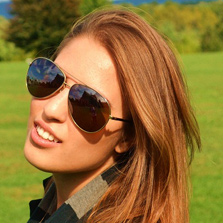 |
|||||
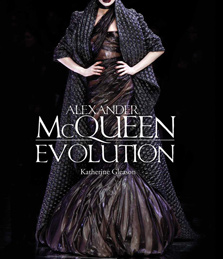 |
|||||
|
Visit Katherine Gleason… www.katherinegleason.com |
|||||










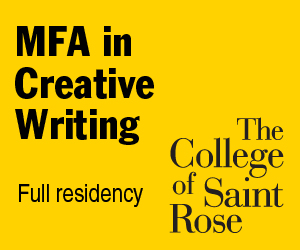
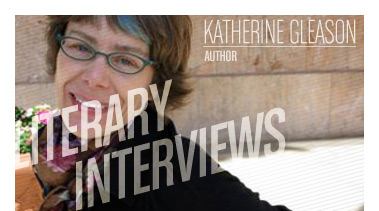
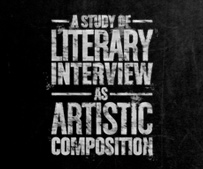














 Stated
Stated
Reader Comments